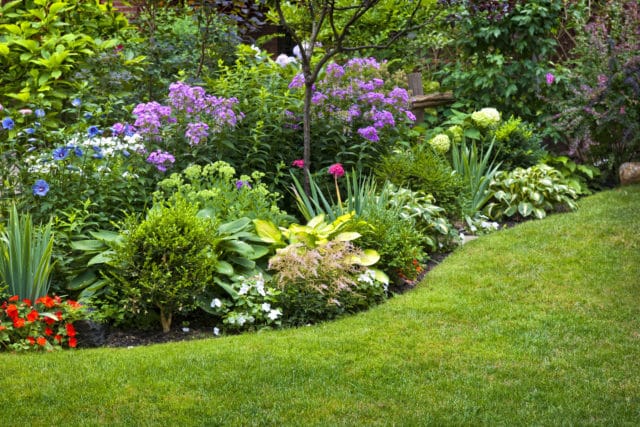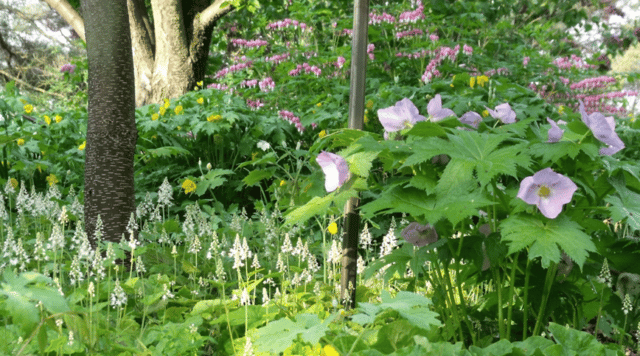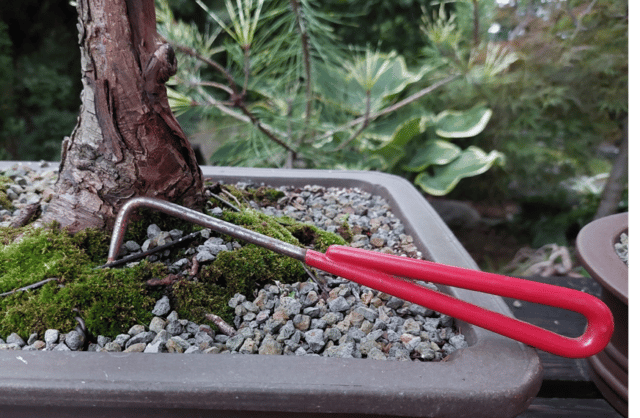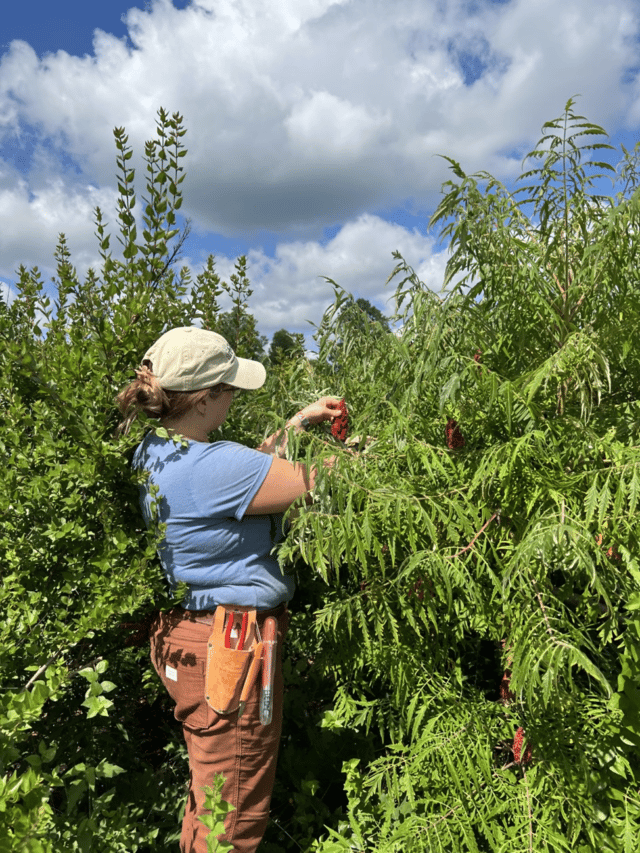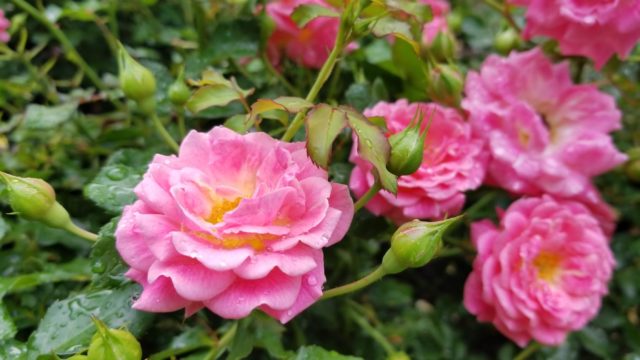
Over the past few years, you may have noticed what seems to be a growing trend in the horticulture industry. Whether you’ve seen them at your local nursery, an urban garden, or your favorite gardening website, fabric pots are beginning to really make an appearance! Seeing these pots around may start to bring some questions in to your head. Why are people starting to prefer these pots over plastic? Do they help out my plants at all? How do I plant something that’s growing in a fabric container? Are these going to help make an environmental impact that I want to see in the green industry? I hope that in this article I can begin to address some of the questions that I know I had when I was first introduced to the idea of fabric containers.

What are they?
Although the term ‘fabric container’ may seem straightforward, you’ll find there is a wide variety of ways that these are made. Many are made from double-layer polypropylene which creates a felt-like fabric, but they can also be crafted from canvas, denim, or natural fibers. Using fabrics such as these creates a healthy root system because the fabric is not only breathable but prunes the root through either air pruning or entrapment pruning as they grow. Air pruning happens as roots begin to grow through the fabric of the bag. Once those root tips hit the air, growing ceases. This may sound like a bad thing, but it actually encourages the plant to produce more roots, resulting in many feeder roots that create a healthy, branching, fibrous root system. This not only allows the plant a greater access to water and nutrients, but it also reduces transplant shock when planting and keeps your plant from getting rootbound in its pot. Entrapment pruning is similar but prunes the roots through a tight weave that doesn’t allow the roots to completely escape through the fabric. This also encourages the development of a fibrous root system but has a wider application in different growing environments like a wholesale grower or nursery.

Plants that are grown in plastic containers often become rootbound with long and winding roots. Anyone who has encountered this knows the time it takes to untangle this mess.
What are some benefits?
Oxygenation
One of the key advantages that fabric containers have over plastic pots is breathability. In order to build strong, healthy root systems plants need to have oxygen available. Plastic pots create an environment where oxygen is only available on the top layer of soil, which completely rejects the needs of the rest of the root mass. With fabric materials air is able to move in and out of the pot, supplying the roots a key resource they need in development. This airflow also helps protect your plants from harsh weather conditions, insulating like a blanket from winter cold and cooling roots in the heat of the summer.
Watering Needs
Fabric containers also allow you a much lesser risk of overwatering your plants. The permeability of the fabric means there won’t be any pooling at the base of your pot after waterings, a common problem found in plastic pots. The fabric materials also act as a natural wicking system which aids in keeping the soil moist, not wet. This is especially helpful for anyone that would consider themselves to be a little heavy handed with watering. I’ll admit I have heard mixed reviews on whether this ends up drying out your plants quicker but if you’re worried about trying fabric containers for this reason, I would advise starting by using plants that are more tolerant of dry spells. This can also be alleviated depending on the soil mix you’re using.
Environmental benefits
So using fabric over plastic as an environmental alternative seems pretty obvious, right? It does go a little deeper than that. The thing is, just because a container appears to be fabric does not mean that you’re ending up with a degradable pot. That being said, there are some great options. I found that my favorite brand for environmental purposes was Root Pouch. They craft their bags completely from recycled #1 plastic water bottles and natural fibers like hemp, cotton, or bamboo. This creates a degradable material that ends up degrading after 3-5 years while also lessening the amount of plastic water bottles we have filling up our landfills. Also consider the fact that plastic water bottles are also FDA approved so you don’t end up with harmful chemicals leaching into the soils of edible plants or into your yard. As mentioned, there are some great options out there for fabric pots that leave a lower impact on our environment. Just keep in mind that you’re always going to want to check what your container is made from if environmental impact is important to you.

Planting
When I was working in a retail nursery, I was often asked if you need to remove the pot before planting. The answer can be a little complicated. The first thing you’re going to want to know is what materials were used to create your pot. If they’re made from only polypropylene, you’re not going to want to plant it in the ground because polypropylene on its own is not a degradable material. Pots that are made with a mix of polypropylene and natural fibers do create a fabric that is degradable so you could technically plant them in the ground, however many states have restrictions as to what can be planted in-ground anyways. I would advise removing the pot from the plant because you are able to reuse the bags over multiple seasons which furthers their environmental benefits. If you have any trouble removing the pouch you can run a knife between the fabric and the root ball to loosen everything up for easier removal.

Here you can see a fabric Root Pouch that has almost completely degraded after being planted in the ground.
Thankfully, as these bags have grown in popularity, they have become increasingly available for purchase and can be found at most of your big box stores such as Lowes or Home Depot. There are tons of different companies that make fabric grow bags, each with a variety of options that can fit your growing needs. I also haven’t noticed much of a price difference between fabric and plastic pots, making these cloth counterparts an affordable alternative. I’m excited to have my hand at trying them out this next growing season and I hope you are too!

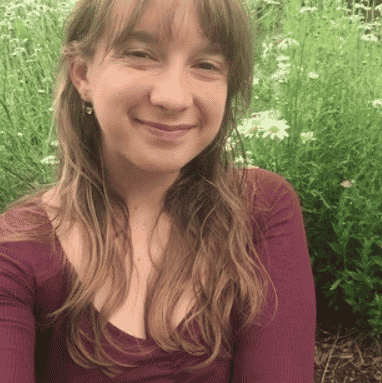
Courtney Keinath
Gardener

